門松 (kadomatsu) is a traditional Japanese New Year's decoration!
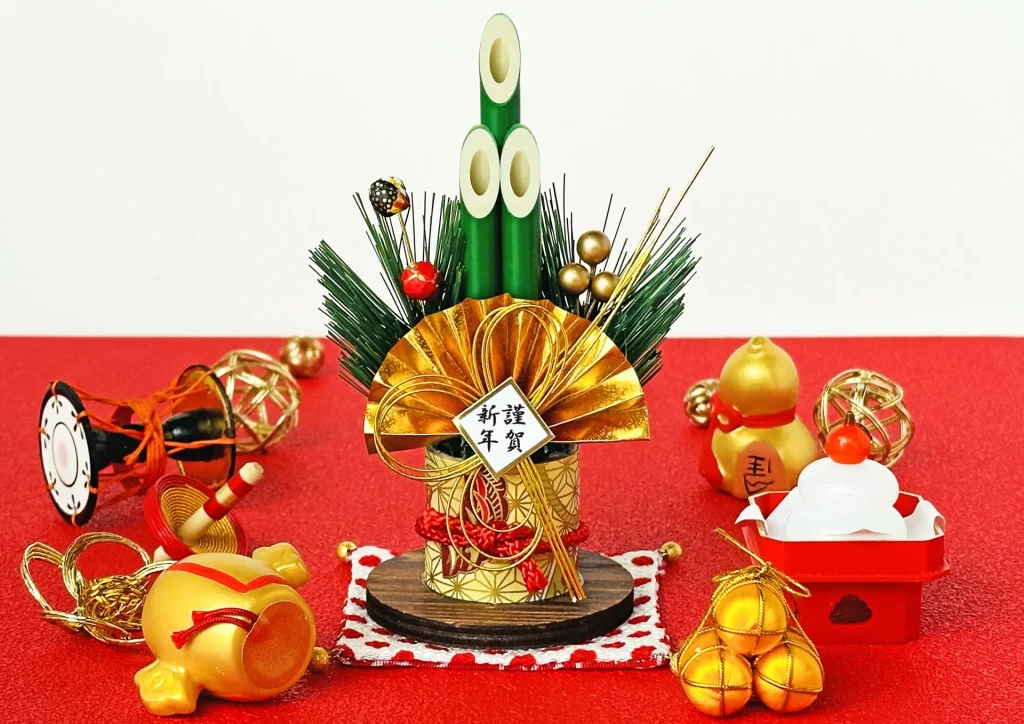
Foreigners celebrating New Year's in Japan for the first time may see bamboo and pine decorations in their homes and wonder, "What are these?" They may wonder, "What is this?
This article will answer those questions. We will explain in detail about 門松 (kadomatsu), an essential part of the Japanese New Year, including its meaning, how to decorate it, and how to dispose of it.
By learning about traditional Japanese New Year's decorations, you will gain a deeper understanding of Japanese culture. Please read this article and enjoy the Japanese New Year to your heart's content.
▼Goandup Picks Click here for recommended articles!
- Required before studying abroad! Goandup Nihongo+, an online Japanese language learning service
- This page introduces services for foreigners who wish to study in Japan or improve their Japanese language skills to learn Japanese online.
- Goandup Salon" community for foreigners living in Japan
- We introduce an online community where foreigners living in Japan can exchange information and interact with each other to support their life in Japan.
- Goandup Study" supports foreigners who want to study in Japan.
- This section introduces study abroad support services that provide comprehensive support to foreigners who wish to study in Japan, from preparation for study abroad to living in Japan.
- Where can I buy a prepaid SIM in Japan? Recommended SIM cards for foreigners are also introduced.
- How to purchase a prepaid SIM and suitable SIM cards for foreigners.
- The Complete Guide to Pocket Wi-Fi in Japan for Foreigners!
- We introduce how to select and recommend pocket Wi-Fi products that can be used conveniently in Japan.
- The Complete Guide to Finding a Job in Japan! Finding a job, changing jobs, and part-time work for foreigners
- This site provides foreigners who want to work in Japan with comprehensive information on how to find a job, recommended job sites, and other information necessary to find a job.
What is 門松 (kadomatsu)?
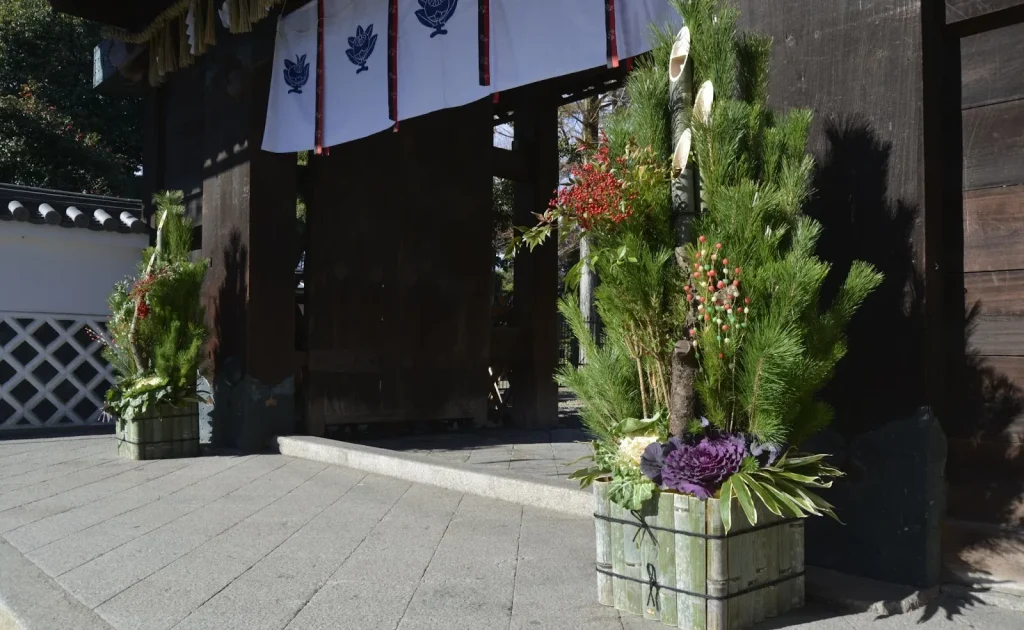
門松 (kadomatsu) is one of the traditional decorations essential for the Japanese New Year. It refers to vertical decorations made of pine trees and bamboos that are displayed at the entrance or by the gate.
The custom of decorating 門松 is said to have spread among the common people during the Edo period. At that time, 門松 was displayed at the gates of samurai residences, and the common people began to imitate it. Today, it is a familiar New Year's tradition in homes all over Japan.
門松 (kadomatsu) type
There are several types of 門松. The shape and size of the 門松 to be displayed varies from region to region and household to household. Here are two typical types of 門松.
寸胴門松 (zundou kadomatsu)
寸胴門松 (zundou kadomatsu) is a 門松 made by cutting straight pieces of bamboo and bundling three or five of them together. It is characterized by its simple shape and has few decorations.
The word "short" means "long in girth". True to its name, 寸胴門松 is characterized by its elongated shape. The advantage of its simplicity is that it can be displayed anywhere, whether at the entrance or by the gate.
角切門松 (kakukiri kadomatsu)
角切門松 (kakukiri kadomatsu) is 門松 made of bamboo cut diagonally and then alternated. 門松 is more decorative than 寸胴門松.
Kakukiri means "to cut a corner diagonally. As the name implies, Kakkiri 門松 is made by cutting bamboo diagonally to create a three-dimensional shape. Kakkiri 門松 is often decorated with lucky charms such as pine trees, nanten (nanten) and senryo (senryo).
Recently, an easy 門松 using plastic or artificial flowers has also been introduced. Since real pine trees and bamboos are not used, the advantage is that they are easy to care for and can be used for a long time.
Meaning of each part of 門松 (kadomatsu)
The 門松 is not just an ornament; each component has its own meaning. The pine tree, the bamboo, and the plants used as ornaments each have their own sacred meaning. Let us explain in detail the meaning of each part of 門松.
Pine Trees: Belief in Pine Trees as Dwelling Place of God
The pine tree, a mainstay of 門松, has long been worshipped as a sacred tree in Japan. As an evergreen tree, the pine tree is considered a symbol of eternal life and longevity because its leaves do not wither even in winter. Pine trees are also believed to be the dwelling place of the gods and are indispensable in creating a sacred space.
Bamboo: represents vitality and prosperity
Bamboo, another major component of 門松, is a symbol of strong vitality and prosperity due to its toughness and tendency to grow straight. Bamboo has the resilience to survive in any environment, and because it grows from knot to knot, it also has the meaning of success in life and prosperity in the family.
Plum blossoms and kale: belief in them as bringing good luck
In addition to pine and bamboo, plants such as plum blossoms and kale are sometimes used as decorations on 門松. Ume blossoms, which bloom prettily in the cold winter, are meant to convey strength against hardship and a good omen for the coming of spring. On the other hand, kale, with its shriveled leaves, is associated with the word "komaru" (be in trouble), meaning to be able to overcome difficulties.
Thus, each plant displayed in 門松 has its own meaning to bring good luck.
Why decorate 門松 (kadomatsu) at New Year's?
The custom of decorating 門松 has been nurtured throughout Japan's long history. Then, why do Japanese people decorate 門松 in the New Year? The reason is to invite the gods into the house.
門松 is an important item to mark the occasion of inviting 年神様 (toshigami sama) into one's home. 門松 is an important item that serves as a landmark to invite 年神様 into the house.
It has been believed that by displaying 門松 at the entrance, one can let 年神様 know where one's home is and invite it in, saying, "This way. In addition, the pine trees, bamboos, and decorative plants on 門松 have sacred meanings, as mentioned above. By decorating 門松 with these meanings, people wanted to honor 年神様 and bring good fortune into their homes.
The representative of 年神様 is known as "なまはげ (namahage)" in Akita Prefecture. なまはげ is an ogre-like deity who visits homes at the end of the year to warn off bad children. Despite his scary appearance, he is a gentle deity who wishes for the growth and health of children. Welcoming such 年神様 with 門松 has been passed down as an important New Year's tradition.
In modern times, it has become more of a decoration to create a festive New Year's atmosphere, not necessarily only for its religious significance. However, it is important to understand the meaning of 門松, which has been handed down from generation to generation, in order to understand traditional Japanese culture.
Decorating period for 門松 (kadomatsu)
The time to decorate the 門松 varies slightly from region to region, but generally runs from late December to mid-January. Many families begin preparations around the end of Christmas and complete decorating by December 28.
In the Kanto region, it is customary to display 門松 until January 7. On the other hand, in the Kansai region, 門松 is often displayed until January 15.
However, there is one day that should be avoided when starting to decorate 門松, and that is December 29. The Japanese pronunciation of December 29 is "にじゅうく (nijyuuku)," which sounds like "二重苦 (nijyuuku)" and is considered bad luck. "二重苦" means to suffer twice. We do not want to start the New Year with suffering, do we? That is why it is wise to avoid 門松 decorations on December 29.
The period for decorating 門松 is generally about one month, although there are regional differences. During this period, celebrate the New Year with 門松 and wish for the health and happiness of your family.
How to decorate 門松 (kadomatsu)
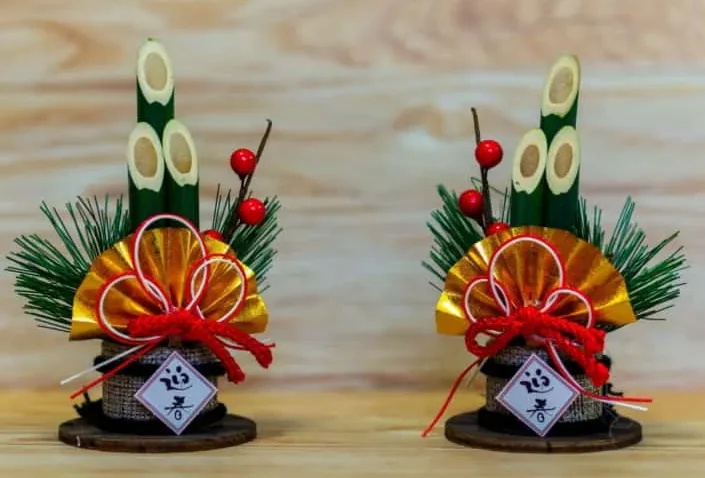
The way 門松 is decorated depends a little on the type of residence, and there are differences in where and how it is displayed if you live in a house or in an apartment.
Here is a closer look at how to decorate 門松 for each housing type.
For a single house
If you live in a house, 門松 is usually displayed by the entrance or gate. In this case, two 雄松 (omatsu) and two 雌松 (mamatsu) are prepared. The "雄" is the "male" and the "雌" is the "female". 雄松 should be placed on the left side and 雌松 on the right side.
The difference between 雄松 and 雌松 is in the pine tree's branching. 雄松 is characterized by its strong, extended branches, while 雌松 is supple and graceful. The harmony between 雄松 and 雌松 represents the wish for marital harmony and family safety.
For single family homes, it is recommended to choose the larger 門松 for its presence, as there is often space by the front door or gate. 門松 size should be chosen according to the size of the house and the ambience of the entrance.
For condominiums
If you live in a condominium, you are expected to display 門松 in front of the front door. However, care should be taken to ensure that the common space of the condominium does not obstruct the passage of other residents.
In condominiums, space in front of the front door is often limited, so it is wise to choose the compact size of the 門松. The smaller 門松 can also be displayed inside the front door. When decorating inside the front door, be sure to balance the placement while allowing space for shoes to be taken off.
Some condominiums may also allow 門松 to be displayed in common areas. In such cases, you should check the rules of the management association and be careful not to disturb other residents.
How to dispose of 門松 (kadomatsu)

When New Year's has passed and it is time to put away your 門松, it is important to be mindful of how you dispose of it: it is sacred, so it is important to treat it with gratitude and respect. Here are some details on how to dispose of your 門松.
Burn in どんど焼き (dondoyaki)
The traditional way to dispose of 門松 is called "どんど焼き (dondoyaki). どんど焼き is held every year around mid-January at shrines and temples, where not only 門松 but also New Year decorations and calligraphy are burned together.
どんど焼き is not only to dispose of 門松, but also to wish for good health for the year. It is believed that the smoke emitted when it is burned has the power to ward off evil spirits. It is also believed that taking the unburned ashes home and scattering them on the front porch will help ensure the safety of the family.
Recently, more and more communities have stopped performing どんど焼き due to environmental protection concerns. However, many shrines and temples still carry on this traditional event. You may wish to check if どんど焼き is being practiced in your area.
お清め (okiyome) and throw it away on garbage day
If you are disposing of 門松 in an area where どんど焼き is not held or at home, you should throw it out on trash day. When doing so, it is important to treat 門松 with gratitude, as if it has completed its sacred role.
Before disposing of 門松, you should do "お清め (okiyome)". お清め is easy to do; just sprinkle a little salt on 門松. Salt is thought to have purifying power and will purge the 門松 of dirt and impurities.
When お清め is finished, place 門松 politely in a garbage bag and dispose of it as combustible garbage. At this time, you can honor the sacred role of 門松 by saying, "Thank you for the past year.
Where to buy 門松 (kadomatsu) and price
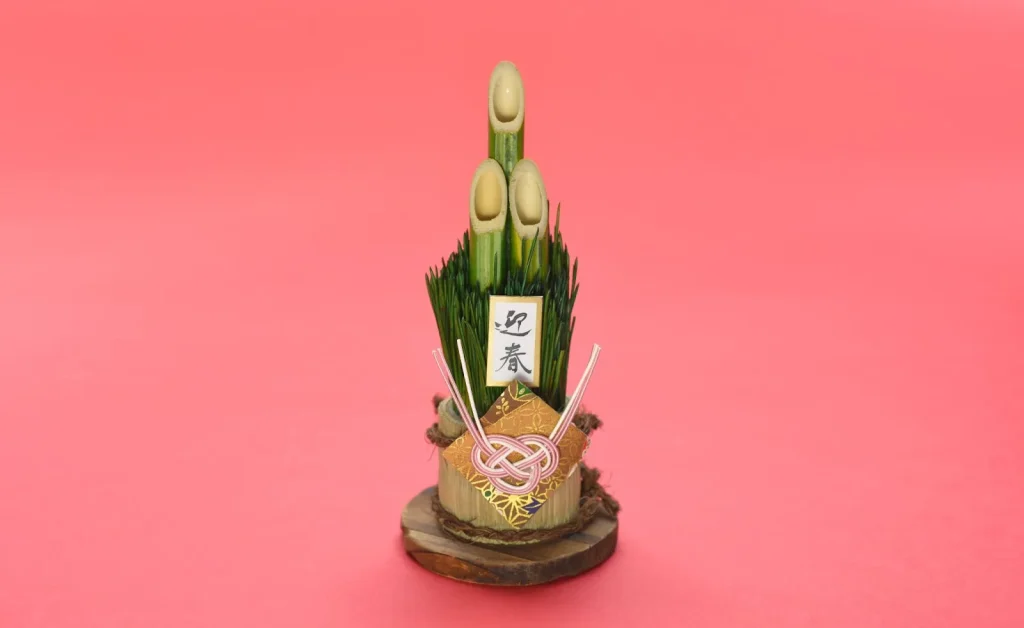
門松 is an important item to welcome the New Year, but where can I buy it? And what is the price? Here, we will explain in detail where to buy 門松 and its price.
Buy from a specialized vendor
門松 can be purchased from specialized suppliers. These vendors are professionals in 門松 manufacturing and can provide high-quality 門松. Some of the vendors have a long history and have been making 門松 for generations.
The 門松 from a specialized supplier is made with a lot of time and effort, from material selection to production. As a result, the price may be as high as 20,000 to 30,000 yen, but the quality is outstanding. We recommend that you use a specialized vendor, especially if you want to display a gorgeous 門松 at your entrance.
You can also buy 門松 from specialized suppliers online these days. It is a great way to get 門松 from the comfort of your home. With an online store, you can also compare and contrast products from well-known 門松 suppliers from all over the country.
Recommended specialty contractors: ▶︎ 門松 in Japan
Buy at supermarkets and home centers
Supermarkets and home centers are the best places to purchase 門松 easily. These stores will have 門松 sections in December. The selection is not as extensive as that of specialty suppliers, but 門松 can be purchased at affordable prices.
Most 門松s at supermarkets and home centers are the easy type made of plastic or artificial flowers. Although they are less textured than full-fledged 門松s, they are easy to care for and can be used for a long time. Many 門松s are also available in compact sizes, making them suitable for apartment dwellers.
The price of 門松 at supermarkets and home centers ranges from 1,000 yen to 4,000 yen. Compared to high-end products, the price is reasonable. If you are looking for a wallet-friendly 門松, please check us out.
The recommended 門松 isclick hereFrom!
New Year's decorations other than 門松 (kadomatsu)
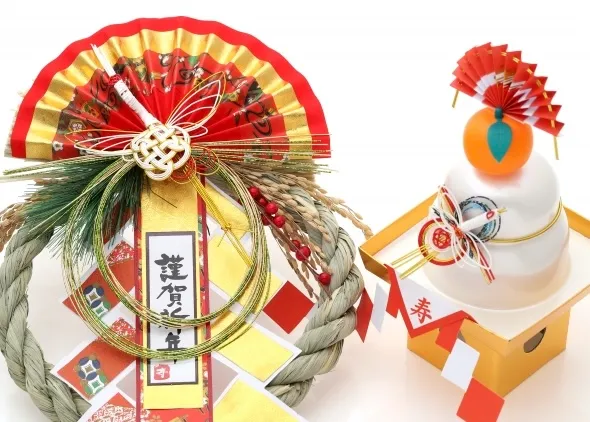
In addition to 門松, various other decorations adorn houses during the New Year. These decorations, like the 門松, are meant to celebrate the New Year and wish for family safety and a bountiful harvest. Here are two typical New Year's decorations.
しめ縄 (shimenawa)
しめ縄 (shimenawa) is a piece of rice straw woven into a rope shape and used to mark sacred places and objects. It is usually displayed at an entrance or on a Shinto altar. It is believed that the rope has the power to keep evil spirits at bay, and also serves as a deity's object of worship.
There are two forms of しめ縄: the looped form and the cut ends of the rope. The looped form is thought to represent harmony and completeness, while the cut and hung form is thought to be the dwelling place of divine spirits. しめ縄 is sometimes decorated with pine trees, citrus fruits, or shide (paper folded in a special way).
The time of year for decorating and disposal is the same as for 門松: decorate in late December or early January, then dispose of it with a local どんど焼き or do a お清め at home before discarding it.
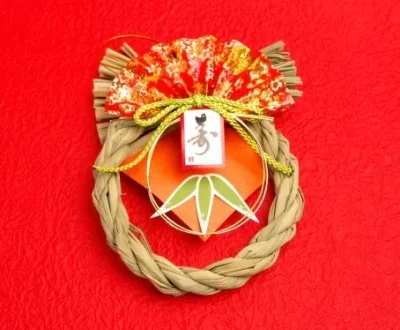
鏡餅 (kagamimochi)
鏡餅 (kagamimochi) consists of two round rice cakes stacked on top of each other and decorated with an daidai (daidai: orange fruit) or other lucky charm. The round shape of the rice cake symbolizes happiness and harmony, and the white color of the rice cake symbolizes purity and holiness.
鏡餅 is usually displayed on a kamidana or in an alcove as an offering to the gods. 鏡餅 is also meant to wish for a bountiful harvest and family safety in the coming year.
The 鏡餅 (kagamimochi) is displayed from around December 28th until 鏡開き (kagamibiraki: the event of eating the decorated kagamimochi) on January 11th. It is said that breaking and eating the kagamimochi on Kagamibiraki day will bring good health and good fortune for the year. If you cannot eat all of it, it is usually cut into small pieces and put in Zoni or Miso soup.
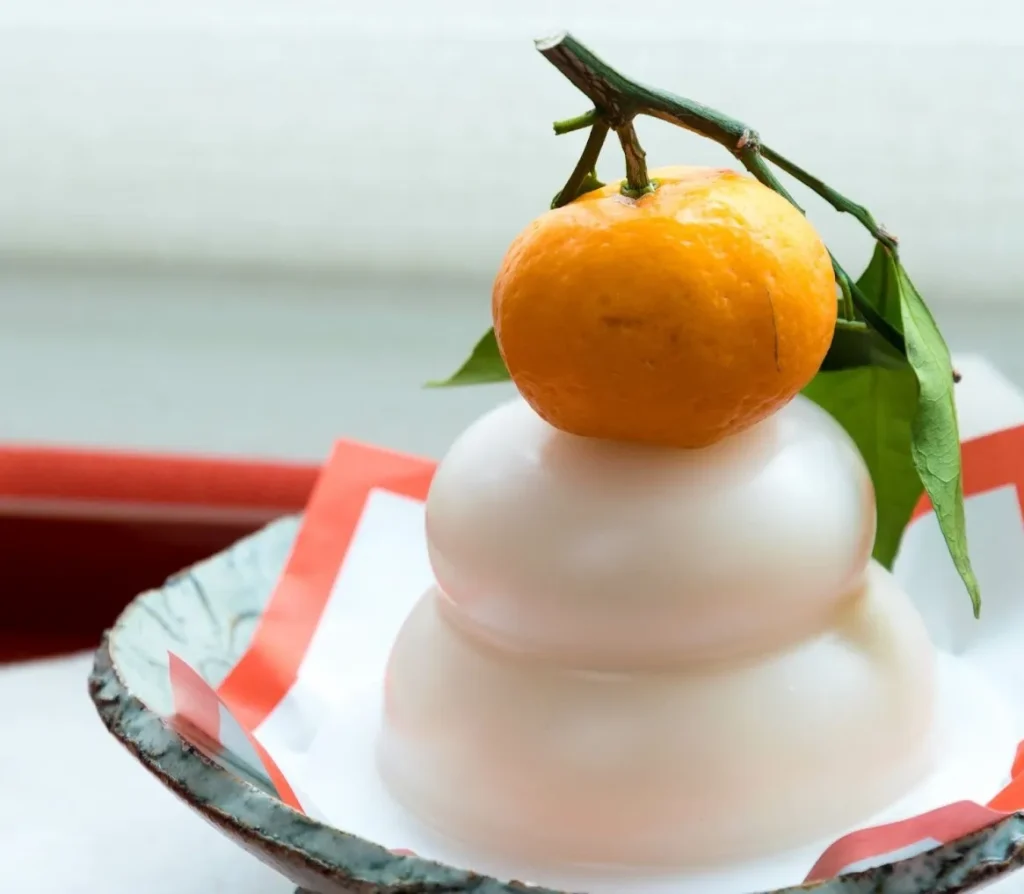
Useful information and support for living in Japan

Living in Japan is fascinating, but it is not uncommon to face many challenges due to language barriers and cultural differences. For example, you may encounter difficulties in all aspects of life, from using keigo (honorific expressions) in everyday and business situations, to difficulties in finding housing, using public services, preparing for the JLPT exam, and even meeting new friends and loved ones.
At such times, Goandup Salon will be your reliable partner!
Our community provides support and information to help foreign residents in Japan to make their life in Japan richer and more comfortable.
- Japanese Language Studywill meet the needs of all levels, from daily conversation to the use of keigo in business situations, to efficient Japanese language learning methods and preparation for the JLPT exam.
- livingaspect of the program provides concrete advice and information on how to establish a foundation for living in Japan, including explanations of Japanese culture and rules, finding housing, and how to contract public services and living infrastructure.
- Jobs & CareersRegarding the "what if" section, we can help you find a job, change jobs, and understand Japanese business etiquette and workplace culture, which are key to a successful career in the workplace.
- Travel & Dining Guidewill introduce you to hidden gems in Japan, must-try gourmet information, and other unique local attractions to help you experience Japan more deeply.
If you have any questions or concerns about life in Japan, Goandup Salon is here to help you! We will wholeheartedly support you to make your life in Japan smoother and more enjoyable.
For more information, click here ▼
summary
How was it? In this article, we have explained in detail the 門松, an essential part of the Japanese New Year, from various angles.
門松 is not just a decoration, but an important item to welcome the gods into your home and wish for happiness in the New Year. Each pine tree, bamboo, and decorative plant has its own sacred meaning.
And in addition to 門松, there are other traditional New Year's decorations such as しめ縄 and 鏡餅. By decorating these together with 門松, you can welcome the New Year with even more festivity.
Japanese New Year decorations are special items, steeped in long history and tradition. Understanding their meaning and decorating them will help you feel the joy of the New Year more deeply.
For foreigners, they may be unfamiliar decorations. However, understanding their meaning and being exposed to Japanese traditions is a good opportunity to learn about other cultures. If you are interested, please try to incorporate Oshogatsu decorations into your home. It will be a special experience to feel the Japanese New Year.






